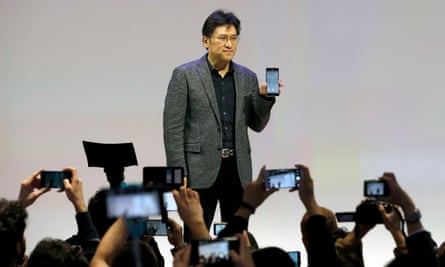Mobile World Congress – the showcase of the most cutting-edge technology on the planet – is in full swing in Barcelona this week. Phones, wearables and everything else with a microchip is showing off fantastic new features. But all anyone really seems interested in is a remake of a phone from 17 years ago, the Nokia 3310.
There are a few ways to look at the Nokia 3310. It could just be a marketing ploy, or a Hollywood-esque remake because the industry has run out of ideas. Or maybe it’s trying to tap into the feeling that modern life is too connected, harking back to a simpler time. But whatever you think the Nokia 3310 is, it tells us something interesting about the state of the smartphone industry in 2017.
“It’s an absolutely damning indictment of the state of the smartphone market that the world is so excited and obsessed with a retro feature phone that shipped 17 years ago,” said Ben Wood, chief of research at CCS Insight.
He’s right. Launched in the centre of what should be the most exciting technology fair on the planet, a so-called dumbphone, or more kindly a “feature phone”, is all anyone’s interested in. And the truth is the new Nokia 3310 isn’t actually anything special. Nokia dumbphones just like it have been made for years – take the Nokia 105, which has even been made by three separate companies: first Nokia outright, then Microsoft when it bought Nokia phones, and now HMD Global, the firm that has licensed the Nokia brand name.
If HMD had simply pushed out what we now know as the new 3310 as the new Nokia 230, would anyone have batted an eyelid? But with the right brand name and model number, HMD has reinvigorated a classic that has the developed world buzzing.
So why does a nostalgia trip like the 3310 take the spotlight when Sony launched a phone with a 4K HDR screen, LG’s G6 is “made for split-screen apps”, Huawei’s P10 has a fancy Leica dual-camera setup, and there’s even a new BlackBerry with a keyboard and everything?
Perhaps it’s because smartphones are boring now. It’s not because they aren’t marvellous machines that have become central to our lives, but they’re all much of a muchness. One smartphone is the same as the next. It has a camera, a screen, it plays music, runs apps and games, shoves the internet in the palm of your hand and forms a conduit for all your life to flow through. But if you broke it and bought a new one, it would do more or less exactly the same, perhaps in a dazzling new colour.

It’s not only that smartphone manufacturers are struggling to differentiate between each other, it’s also that each iteration of a Sony, an Apple, a Huawei or a Samsung smartphone looks pretty much the same as the last one.
Francisco Jeronimo, research director for European mobile devices at research firm IDC, said: “We’ve got to a point where improving phones by creating megapixel increases in the camera or improvements in the screen is a lot harder than it was five years ago.”
The big leaps in technological advancement are mostly behind us. There is only so much you can do to a smartphone that already does it all.
Jeronimo explains: “We’ve got to such quality in the devices that we’ve started hitting the physical limits, which means most of the innovation going forwards is likely to be in software, voice, your interaction with the phone and its services, to make the smartphone much smarter than it is today.”
The one primary feature left open for obvious innovation is within screen design, and that’s where the envelope is being pushed this year. The holy grail of an all-screen phone will be the biggest change in design since the phablet came along.
According to Jeronimo and others talking behind the scenes at MWC, including people talking privately to the Guardian, Samsung’s Galaxy S8 with its new “infinity display” is likely to represent the biggest change in phone hardware design in the last three years.
But even the all-screen sci-fi dream may not be enough. People will buy new phones in their millions, of course, but they’re not going to be excited about their third, fourth or fifth smartphone that looks just like the old one.
Once manufacturers have completed their bezel-less transformations, where do you go with a phone that’s already all-screen? Bendable, fold-out or roll up phones, perhaps, or will the next big leap be holographic?
In the meantime Amazon, Google and many others are betting on voice. But voice assistants in their most advanced forms are less of a smartphone feature and more of a technology delivered by the smartphone.
So perhaps that’s it for major smartphone innovation. Maybe they’re destined to be relegated to commodity items. The new PC for the post-PC era; the beige box for the 21st century.
